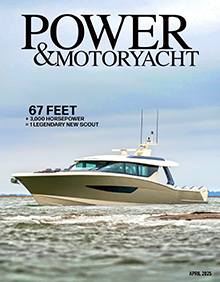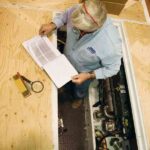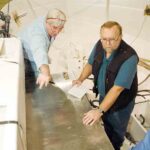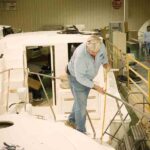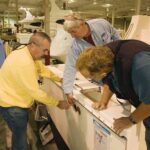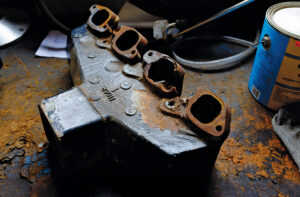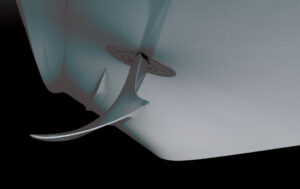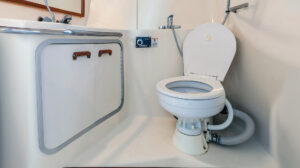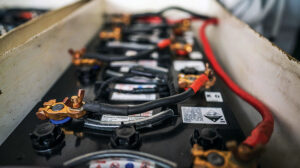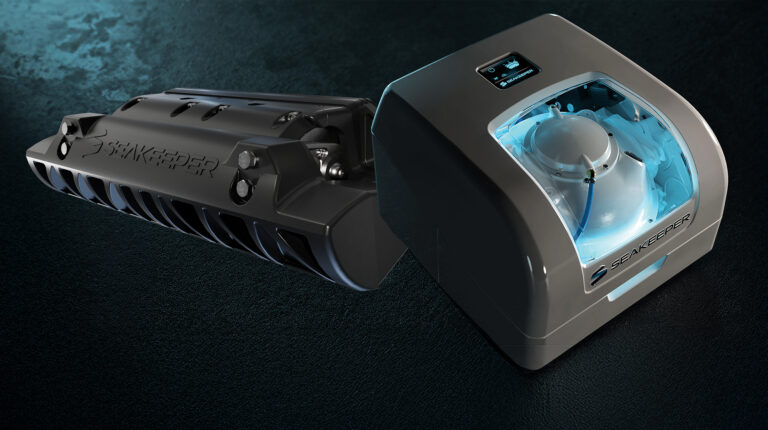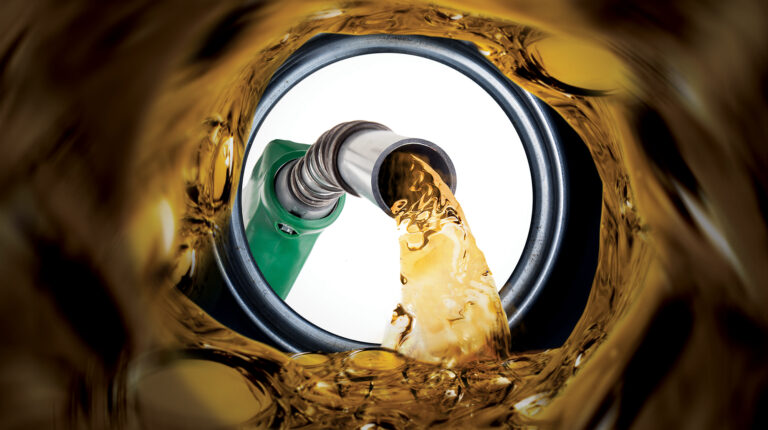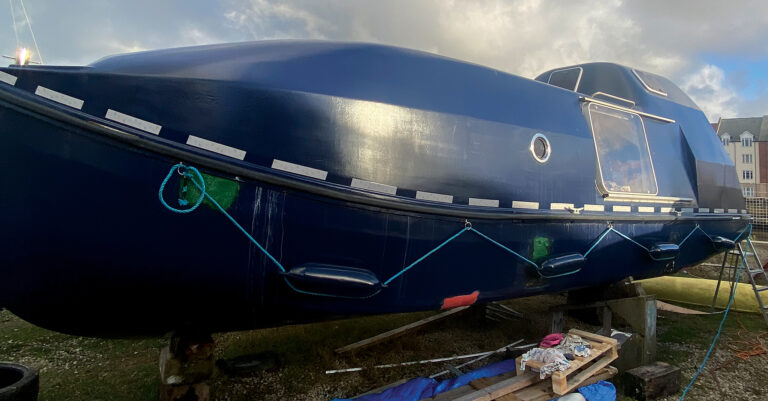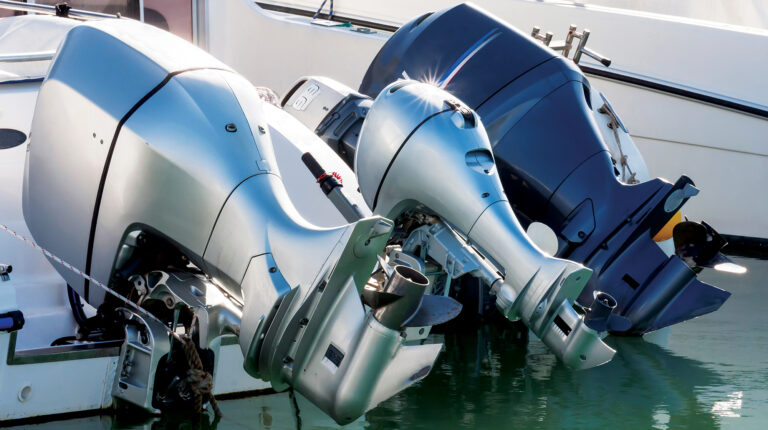Does your boat have an NMMA (National Marine Manufacturers Association) certification plate near the helm or the “NMMA Certified” logo on the capacity plate? If it does, did you ever wonder exactly what it means? I did, and being a longtime cynic, I supposed the plate didn’t mean much: Either the NMMA relied on the builder to attest to rudimentary standards or it simply provided the plates as part of the membership package. But after spending a day with NMMA certification inspector Tim Pitts and his 11-page, 343-item checklist, I’ve changed my mind: Certification means a lot, and I wouldn’t buy an uncertified boat. You shouldn’t, either.
According to its Web site, the NMMA is “dedicated to creating, promoting, and protecting an environment where members can achieve financial success through excellence in manufacturing, in selling, and in servicing their customers.” The association estimates that 80 percent of the marine products used in North America are produced by its 1,400-plus members. Among its myriad programs and services, the NMMA provides certification inspections to boatbuilders to verify compliance with American Boat and Yacht Council (ABYC) standards. Until 2005 certification was voluntary, but now “NMMA members are required to be certified by the close of the 2007 model year,” says Robert Newsome, NMMA’s manager of engineering standards. “We are jumping from around 120 certified manufacturers in 2005 to over 350 by August 2007.” At presstime the count stood at just more than 200, although according to Newsome all NMMA-member builders have been inspected. “Now manufacturers are working to bring their boats to compliance before certification is granted,” he says.
The NMMA certifies products in four categories: boats (up to 26 feet), yachts (26 feet and over), personal watercraft, and trailers. The “handbook” for inspection is the American Boat and Yacht Council’s voluminous Standards and Technical Information Reports for Small Craft, a tome that’s about as interesting as the Federal Tax Code, that is unless you want to ensure boats are built according to demanding requirements—much more demanding than those necessary to meet U.S. Coast Guard regulations. Since its founding in 1954 by members of the U.S. Coast Guard Motorboat and Yacht Advisory Panel, the ABYC’s mission has been “to develop quality technical practices and engineering standards for the design, construction, maintenance, and repair of small craft with reference to their safety,” and Standards reflects this. The 65 sections in the current edition (additions and revisions are published continuously) cover all things nautical, from “Marine Liquefied Petroleum Gas (LPG) Systems” to “Lightning Protection.” The NMMA yacht inspection refers to 34 standards (plus selected federal regulations), while boats need comply with only 32 standards.

Tim Pitts spent 25 years in the U.S. Coast Guard, retiring as a Master Chief, a level of expertise typical of NMMA inspectors.
Pitts is one of only five NMMA certification inspectors in the United States; since each manufacturer must have each of its models inspected annually, he and his fellow inspectors are understandably quite busy. A retired master chief machinery technician, Pitts spent 25 years in the U.S. Coast Guard. He served as a port engineer, providing tech support for commercial ship and boat repair; as a surveyor; and as an engineering instructor for both the Coast Guard and the U.S. Navy. He also did sea duty in the engineering departments aboard four different Coast Guard cutters. Since leaving the Coast Guard five years ago, Pitts has been an independent marine surveyor and is a member of the Society of Accredited Marine Surveyors (SAMS). Despite his NMMA work, he’s still independent: The NMMA inspectors are hired as outside experts. Using third-party inspectors “allows the program to be as impartial as possible,” says Newsome. “The inspector does not work for NMMA and does not do any work with the manufacturer [he is] inspecting.”
I tagged along on Pitts’ inspection of a 2007 Silverton 36 Convertible. Unlike a prepurchase survey, the NMMA inspection does not cover structure or scantlings, nor is a sea-trial involved. But almost nothing else goes uninspected. Armed with the checklist, flashlight, mirror, digital camera, and an encyclopedic knowledge of the ABYC standards, Pitts delves into every crevice. He doesn’t miss much: “When I walk up to a boat,” he says, “I see 30 things before you see one.” After two years of certification inspections, he knows where to look and what to look for. The day I was with him, he inspected several 36 Convertibles at different stages of construction, starting from basically the bare hull and finishing aboard a completed boat.
This article originally appeared in the April 2007 issue of Power & Motoryacht magazine.
Tim Pitts’ tools include a 343-item checklist.
Fuel systems are subject to more than 40 inspection items regardless of fuel type.
Pitts explains one of 44 checklist items to the author (right).
Fuel tank surfaces must have proper drainage.
Rails on weather decks are required to be at least 24 inches high and pass a 400-pound loading test.
Pitts explains a concern to Silverton’s chief engineer Walter Sharp while the author looks on.
Visibility forward must be unobstructed through a 30-degree arc.
Even if not required, hatches must meet ABYC standards.
Horns must carry a type-accepted stamp.

